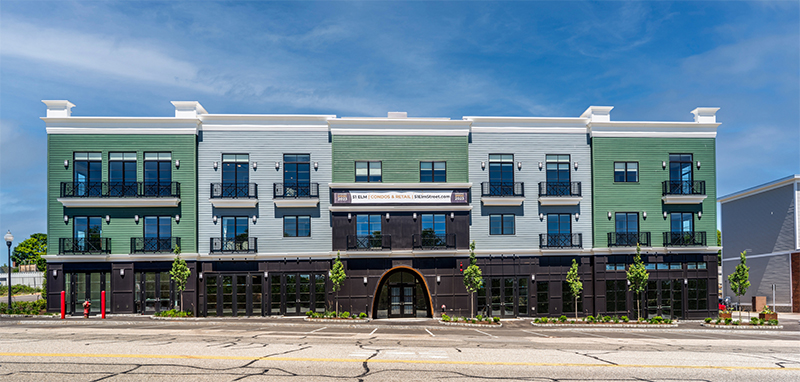PLACE assists the Dow Group in new
luxury condominiums at 51 Elm

Laconia, NH Adam Dow, CEO of the Dow Group powered by PLACE and affiliated with Keller Williams Coastal and Lakes & Mountains Realty, has released information on a new development at 51 Elm St. in the Lakeport neighborhood. Developed by Paugus Properties LLC and built by Bonnette, Page & Stone, this development encompasses 20 residences, ranging from studios to one, two, or three-bedroom layouts.
 “We are extremely excited to bring this new lifestyle to the Lakes Region of New Hampshire,” said Dow. “It’s not like anything else, and certainly will grab the attention of those who want to downsize off of the lake and still enjoy what the Lakes Region has to offer.”
“We are extremely excited to bring this new lifestyle to the Lakes Region of New Hampshire,” said Dow. “It’s not like anything else, and certainly will grab the attention of those who want to downsize off of the lake and still enjoy what the Lakes Region has to offer.”
The condominiums at 51 Elm St. offer innovative trends, luxury hotel aesthetics, rock n’ roll spirit, and a modern art museum’s essence. Each residence embodies a design philosophy that blends elegance with finishes such as stainless steel GE appliances, Kohler premium fixtures, and tech-forward features. Abundant natural light through expansive Marvin windows creates an inviting atmosphere overlooking vistas.
The wide-range of amenities include a gym, residential elevator, parking, and a rooftop deck for residents.
“The vision presented by 51 Elm for the future of Lakeport is a whole new concept for the area – urban living with a dash of lake life situated in a walkable, bikeable community prime for the area,” said realtor, Mike Gagnon.
51 Elm is a short distance to local restaurants, including O’s Steak and Seafood and Fratello’s Italian Grille, as well as entertainment options such as the Lakeport Opera house. Just a 90-minute drive from Boston and under an hour from Manchester, this town offers convenience for those seeking tranquility, outdoor pursuits, and cultural experiences.
PROCON and Hitchiner break ground on 57,000 s/f shared services operations facility








.png)